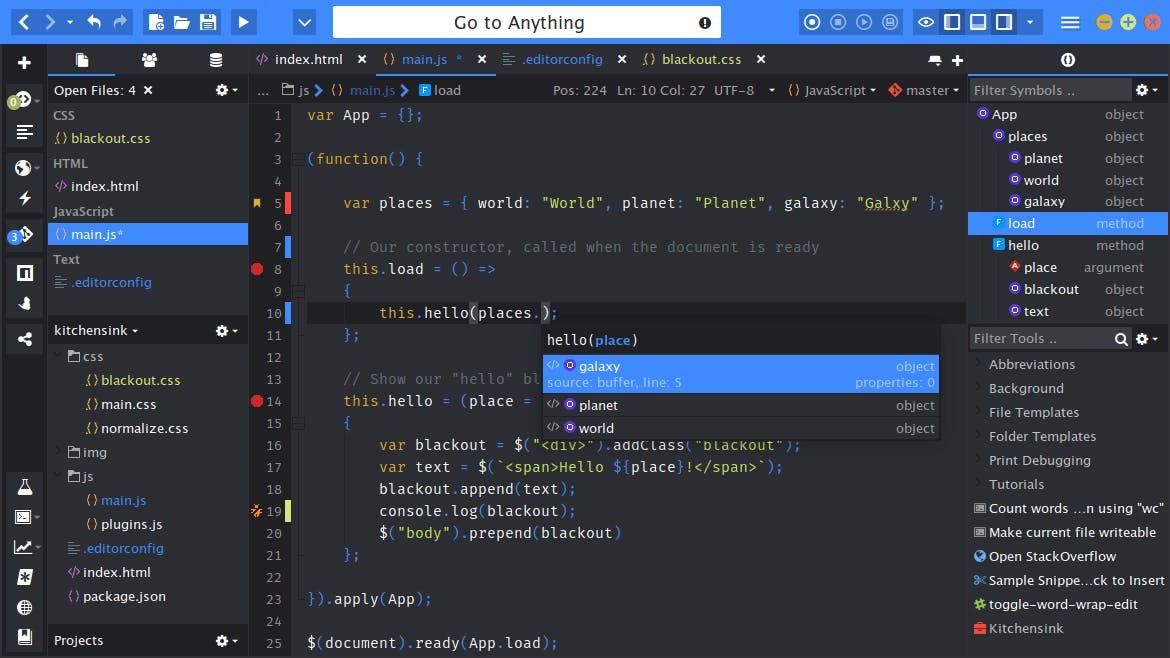

While development on Sublime seemed to stall for several years, it’s recently picked up again, meaning people should expect more support and features going forward.Ĭreated by the folks at GitHub, Atom bills itself as a hackable text editor built for maximum customizability. Though you can enjoy a trial mode for as long as you want, for the full version, you’ll need to pay $99. One downside to Sublime is that it isn’t open source.

Multiple Selections allows you to change multiple lines of code at once. The Goto Anything feature is a super convenient way to open files and instantly jump to particular lines, words, or symbols. Sublime’s best features embody its philosophy of getting things done as quickly as possible. For one, Sublime boasts color-coded support for a number of obscure and specialized languages, like Erlang, Go, Lisp, and Lua. However, being the old timer does have some advantages. Since Sublime’s first release, many other text editors (particularly Atom) have taken their cues from Sublime. Sublime has been around since 2008 and is often considered the gold standard of text editors for its performance, slick UI, and useful features, especially the minimap, which gives developers a bird’s-eye view of their code while they work.

In this article, we’ll take a look at the differences between Sublime and Atom so that you can pick the best code editor for your needs. Both are highly capable text editors that have huge followings and active developer communities. In the other corner you have the relative new-kid-on-the-block, Atom, an open-source code editor from GitHub built with web technologies HTML and Node.js. In one corner you have Sublime Text, a shareware cross-platform source code editor built with Python and C++. In the world of text editors, two platforms reign in popularity. Their simplicity makes text editors ideal for quickly sketching out ideas and editing files. At their most basic level, they let you create and edit plain text files without having to worry about the hidden formatting of a word processor or the overbearing complexity of an Integrated Developer Environment (IDE). No additional software is required when you are working with an IDE.Text editors (also known as code editors) are an essential part of the developer’s toolkit. IDE provides integrations with plugins, extensions and all of them have their own compilers, so coding, executing, and debugging can be done in one platform.IDE's also give improvements on the Syntax and code to the developers for writing more Efficient codes. We can write high-quality Software and applications in an IDE, with all the Autocomplete and debugging features of it.All the IDE's packages are automatically imported as we write the code, and the IDE itself provides a file Structure where we can start programming. Programmers can only focus on the code rather than maintaining the file structures imports etc.All the configurations are handled by the IDE. There is no need to refers other Editors, Example you are doing a project on node.js and you need one external library then you can simply install the library in the software no additional settings are required.The Major Feature of an IDE is, it supports multiple languages, You can start coding in any language you want, it has all the libraries and features of the language.


 0 kommentar(er)
0 kommentar(er)
